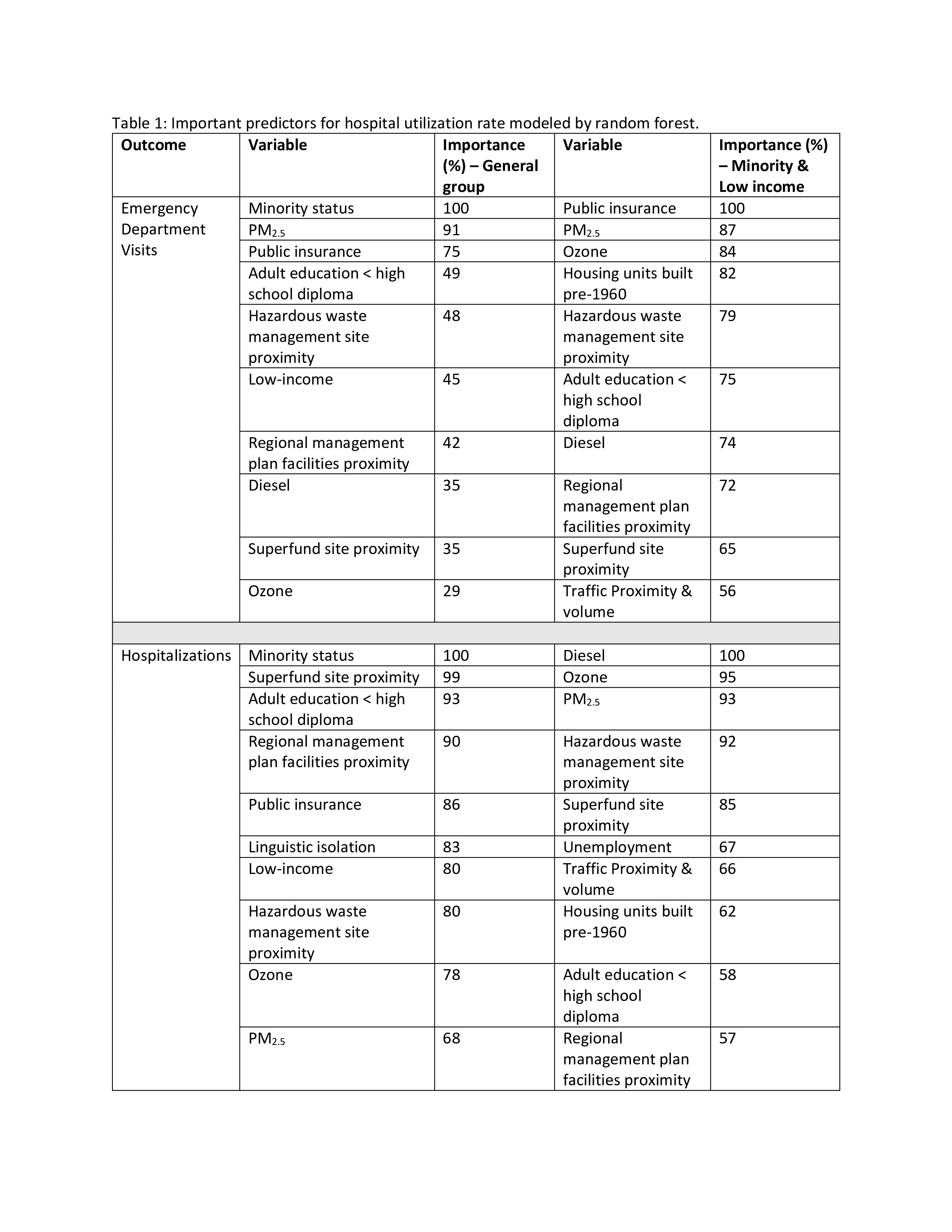Environmental Health
Environmental Health
620 - Geo-Environmental risk factors affecting morbidity from childhood asthma in an urban setting
Publication Number: 620.313

Anand Gourishankar, M.B.B.S., MRCP, MAS
Attending Physician/Associate Professor of Pediatrics
Children's National Health System
Washington, District of Columbia, United States
Presenting Author(s)
Background:
Pediatric emergency department (ED) visits and hospitalizations for asthma exacerbations are multifactorial. Urban children with asthma have variable environmental exposures to airborne pollutants and to physical sites harboring toxins.
Objective:
To identify the predictive contribution and integrated relationship of environmental exposures and minority status with pediatric asthma morbidity.
Design/Methods:
In a retrospective cross-sectional study using population data from Washington, DC Pediatric Asthma Registry from 2018 and 2019, we applied machine learning to measure the predictive contribution of airborne pollutants and proximity to toxic sites to ED visits and hospitalizations among children under 18 years with asthma treated within a single urban pediatric hospital system with near complete capture of asthma morbidity. Spatial analysis and mapping conducted with same predictor variables and prediction map developed for ED visits and hospital admissions.
Results:
The top three variables of importance for ED visits were minority status, higher PM2.5 exposure, and having public insurance. The top three for hospitalizations were minority status, proximity to a superfund site, and adult caregiver education less than a high school diploma (Table 1). Among minority and low-income groups, ED visit predictors were having public insurance, higher exposure to PM2.5 and ozone; hospitalization predictors were greater exposure to diesel exhaust, ozone, and PM2.5. Overlap of random forest predictions for ED visits and hospital admissions with previously identified high disease burden locations validated our machine learning approach (Figures 1 and 2).
Conclusion(s):
Greater exposure to air pollutants and proximity to toxic sites as well as minority status are interdependently associated with unscheduled healthcare visits in urban children with asthma. .jpg)
.jpg)

